Abstract
Achieving sustainable machining processes has become crucial in many industries in order to support sustainable development goals (e.g., good health and well-being, decent work and economic growth, affordable and clean energy). Many attempts have been made to optimize the sustainability aspect during machining processes and to offer optimized cutting conditions. However, there is a vital need to develop a decision-making approach that can be flexible and offer optimal sustainable solutions for different machining scenarios. The current study offers a new decision-making approach for sustainable machining processes using data clustering (i.e., K-means clustering) and multi-objective optimization methods (i.e., grey relational analysis). Utilizing the multi-objective optimization after the clustering phase provides the decision maker with optimal and sustainable cutting conditions for different clusters. The developed approach is validated through a case study that includes five design variables (i.e., feed, speed, nose radius, cooling strategy, and rake angle), three machining outputs (i.e., surface roughness, specific energy, and unit volume machining time), and four different scenarios (i.e., finishing, roughing, balanced, and entropy). Three clusters were generated, and the obtained results were compatible with the physical meaning of each studied scenario. Such an approach can provide the decision maker with sufficient flexibility to select the optimal cutting settings for various scenarios, as well as the freedom to switch between clusters and/or scenarios with minimal effort.
1. Introduction
Today, there is a growing demand to incorporate sustainability requirements into all economic activities. Considering the importance of machining processes in the manufacturing sector and their environmental impact, these processes should incorporate sustainability principles [1]. To meet sustainability requirements in the machining industry, significant effort has been devoted to the development of new machining strategies that minimize the negative environmental impacts of machining processes. These strategies, such as dry cutting, cooling/lubrication methods employing minimal amounts of cutting fluids, and cryogenic cooling, are presented as potential solutions to achieve a sustainable machining environment [2]. On the other hand, numerous attempts have been made to assess the sustainability levels of machining processes by developing machining-specific sustainability metrics [3,4]. Moreover, as presented in the open literature [5,6], the life cycle assessment (LCA) is becoming a common method for evaluating the environmental impacts associated with machining processes. These evaluation methods utilized a single index to determine the optimal cutting condition. This may result in an erroneous selection of the optimal settings, as this method restricts the search space to a single solution. A previous study [7] compared the effectiveness of different coolant strategies (e.g., cryogenic, minimum quantity lubrication) when machining Ti-6Al-4V. The comparison was based on the machining process performance and the environmental impact effect, and it was found that machining under cryogenic cooling was able to strike a balance for both objective functions. Another study [8] proposed a mechanistic model for cutting forces in turning operations, considering the nose radius effect. This force model necessitates fewer machining tests to determine the cutting-specific coefficients for a given workpiece material-cutting tool combination. In addition, a previous study [9] offered a methodology for analyzing, modeling, and optimizing the machining process performance when cutting nickel-based alloy. The developed methodology integrated different techniques such as analysis of variance, adaptive neuro-fuzzy inference technique, and the non-dominated sorting genetic algorithm (NSGA-II) to provide accurate optimal solutions. Numerous researchers [9,10] have utilized the application for multi-objective optimization in machining processes. This was intended to simultaneously optimize multiple machining characteristics objectives as well as sustainability metrics such as personal health and safety, especially when using certain lubricants and coolants. This is because different elements in the cutting operation including coolants and lubricants may cause diseases such as cancer [11]. In addition, multi-objective optimization generates numerous optimal solutions whose performance varies according to the studied objectives. Furthermore, some research papers have linked the application of multi-objective optimization to the evaluation of the sustainability of machining processes [12]. Over the last decade, there has been a rapid increase in the use of smart optimization techniques to select optimal cutting conditions, thereby achieving the required sustainability targets. For example, a recent study [13] offered an optimized approach when machining Ti-6Al-4V using the non-dominated sorting genetic algorithm and statistical-based multi-objective optimization. This work discussed four different machining scenarios. Furthermore, based on the principal component analysis (PCA) algorithm and the back-propagation (BP) neural network, a recent study [14] proposed a smart system for assessing the sustainability aspects of the micro-milling procedure. Another recent study [15] proposed a new approach to optimize the sustainable machining performance during dry cutting AISI 304 using the Taguchi method integrated with the grey-fuzzy technique. Another attempt was presented in [16] to optimize the sustainability aspects of the machining processes using the knowledge of discovered principles along with multi-objective optimization through the non-dominated sorting algorithm (NSGA-II). A further study [17] applied the clustering and fuzzy logic methods to predict the forces during turning operations under high-pressure cooling, and an acceptable error was observed.
Despite all these efforts, there is a crucial need to develop a decision-making approach that can be flexible and offer optimal sustainable solutions for different machining scenarios (i.e., easily accommodating any sudden changes). This is because different indicators need to be considered when optimizing the sustainable machining process (e.g., waste, product quality, personal health aspects, costs, environmental impact). In addition, to meet the various needs of the sustainable machining system, such an approach should be flexible enough to switch between various desired objectives with the smallest of efforts. Thus, the current study offers a new decision-making approach for sustainable machining processes that can address the previously mentioned requirements. This approach can support the decision maker to select accurate and optimal ranges of cutting process parameters under different scenarios. Thus, using such an approach can accommodate any sudden/new requirements the decision maker might confront. Also, it represents a vital step towards achieving a sustainable machining environment.
This approach depends on clustering analysis which is a tool to partition a given data set for a number of subgroups (i.e., clusters) based on a certain degree of similarity and a recognized pattern. The similarities of the obtained machining data sets are strongly linked to different machining scenarios (e.g., roughing and finishing strategies). In addition, utilizing the multi-objective optimization after the clustering phase provides the decision maker with the optimal and sustainable cutting conditions for different clusters. To sum up, the combination of PCA, clustering, and multi-objective optimization offers a successive method to analyze unlabelled/unsupervised data. This (a) offers clusters that describe the best split for the machining objectives, and then (b) provides the decision maker with optimal solutions for each generated cluster using multi-objective optimization. Thus, optimal solutions can be identified for each generated cluster so that the decision maker will have enough flexibility to select the optimal settings based on the desired preference. Section 2 lays out the detailed steps for the developed approach, which is then implemented and discussed through a case study in Section 3 to validate its effectiveness. Conclusions and future directions are presented in Section 4.
2. The Developed Approach
Figure 1 depicts the proposed flowchart. There are seven steps in this process. The following is a summary of these steps:
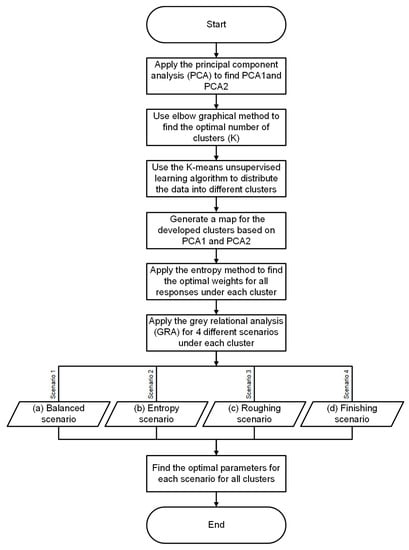
Figure 1.
Flowchart of the developed approach.
- Since more than two measured responses are usually studied to achieve a sustainable machining process, the first step is to apply the principal component analysis (PCA) to facilitate performing the clustering step. PCA is a prevalent technique for dimension reduction algorithms [18,19], and it is performed prior to k-means clustering to alleviate the high-dimensionality issue and accelerate computations [20]. The PCA approach converts the measured responses into two main normalized responses (i.e., PCA 1 and PCA 2). The first principal component (PCA 1) is the normalized linear combination of the responses that have the largest variance, while the orientation of the PCA 2 reflects the second largest source of variation in the data and is orthogonal to the first PC. Both PCA 1 and PCA 2 should pass through the average point in the data set. The PCA transformation is performed mathematically using the singular value decomposition SVD (to lower the dimensional space into two components). The SVD’s basics are to determine the matrix that includes both PCA 1 and PCA 2 based on the squared root of the eigenvalues and the eigenvectors of the high-dimensional input data [21].
- The second step is to use the elbow graphical method to find the optimal number of clusters. The best number of clusters to describe a given dataset is determined iteratively [22,23]. The elbow method computes the sum of squared distances of samples to their nearest cluster center for each number of clusters K, weighted by the sample weights if provided [22]. The elbow-point is the optimal number of clusters for a particular dataset [22,23].
- The third step is to apply the clustering technique. In this approach, “K-means” is used to generate different clusters. K-means is an unsupervised learning algorithm that clusters data by attempting to separate samples into “n” groups of equal variances while minimizing the inertia or within-cluster sum-of-squares criterion. The number of clusters must be specified for this algorithm (see the previous step). This technique has been used in a wide variety of applications in a variety of fields [20,22]. The K-means algorithm takes a data set (X) with N samples and separates it into K distinct clusters, with each cluster being defined by the mean of its constituent samples. The means, also known as the cluster “centroids,” are typically not points from X, despite sharing the same space. The K-means algorithm selects cluster centers that minimize the inertia, or within-cluster sum-of-squares, as shown in Equation (1) [18]:
- At random, assign a number from 1 to K to each observation. These serve as the observation’s initial cluster assignments.
- Repeat until the cluster assignments no longer change.
- Determine the cluster centroid for each of the K clusters.
- Assign each observation to the cluster with the closest centroid (where the closest is defined using Euclidean distance).
- The fifth step is to generate a map that includes the developed clusters based on PCA 1 and PCA 2.
- The sixth step is to find the optimized weights for each measured response for each developed cluster using the entropy method. The entropy method, which is derived from information theory, can be used to objectively determine criteria weights from pertinent decision data. When using entropy, a decision criterion’s weight is directly correlated with the average intrinsic information produced by a particular set of alternative evaluations [24]. The entropy method consists of the following summarized steps: (a) data normalization, (b) computing the entropy, and (c) computing the weight vector (including all studied responses). The entropy normalized value can be obtained as shown in Equation (2), where = 1, …, m; = 1, …, k; m is the number of data sets (i.e., machining experiments) and k is the number of the machining characteristics responses, is the original value, and is the entropy normalized value. Meanwhile, the entropy value for each response can be determined as shown in Equations (3) and (4). The assigned weight for each response can be calculated based on Equation (5)
- The seventh step is to define new scenarios using new weights based on the preference of the decision maker (i.e., balanced, finishing, roughing).
- The eighth step is to apply the multi-objective optimization using the grey relational analysis (GRA). GRA can be adapted for solving the complex interrelationships between the designated performance characteristics. Through this analysis, the grey relational grade (GRG) is defined favorably as an indicator for evaluating multiple performance characteristics. In recent years, grey relational analysis has emerged as an effective method for analyzing processes with multiple performance characteristics. It provides solutions for situations in which some information is known and some is unknown; consequently, it only provides a level-based solution. Various studies [25,26] have utilized it to determine the optimal operating levels associated with multiple performance characteristics in machining processes. GRA techniques consist of the following summarized stages (see Figure 2): (a) data normalization, (b) finding the deviation sequence for each measured response, (c) the determination of the grey relational coefficients, (d) assigning importance weight for each measured response and calculating the grey relational grades, and (e) ranking and determining the optimal process levels. For the first stage, linear normalization is used to normalize the data. The normalization is performed using Equation (6) as all studied responses have “smaller-the-better”-based characteristics.
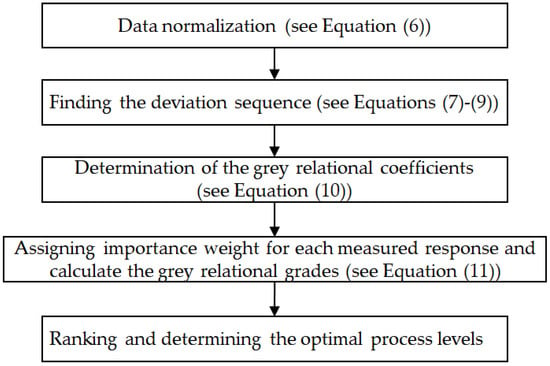 Figure 2. A flow chart summarizing the steps of the GRA technique.
Figure 2. A flow chart summarizing the steps of the GRA technique.
In the next section, the developed approach will be implemented to validate its effectiveness.
3. Validation and Discussion
The proposed approach is validated in this paper using the experimental details provided in [27]. Numerous end milling experiments on AISI 1045 were carried out in [27]. The purpose of this study was to compare the effects of using graphite and molybdenum disulphide (MoS2), two different solid lubricants, on sustainable machining performance. Additionally, wet machining has been compared with these two lubrication techniques. Overall, 243 end milling experiments were performed using the three lubrication techniques (81 tests each), all at a constant axial depth of a cut of 20 mm and radial depth of cut of 1 mm. Three different levels of cutting velocity, feed rate, rake angle, and nose radius were used (see Table 1). Three main responses were measured, namely: specific energy (E in J/mm3), surface roughness (Ra in µm), and unit volume machining time (T in min/mm3). Specific energy, surface roughness, and unit volume machining time reflect the environmental, social, and economic sustainability levels, respectively.

Table 1.
The input parameters and their levels based on [27].
The results obtained in [27] are used to validate the developed approach. The results after the implementation of the developed approach are provided as follows:
- The PCA technique is used as a dimension reduction algorithm to convert the measured responses into two main normalized responses (PCA 1 and PCA 2). This step is necessary to accurately perform the clustering operation.
- The elbow method is used to find the optimal number of clusters. Based on Figure 3, it is found that the best number of clusters for this specific dataset is 3.
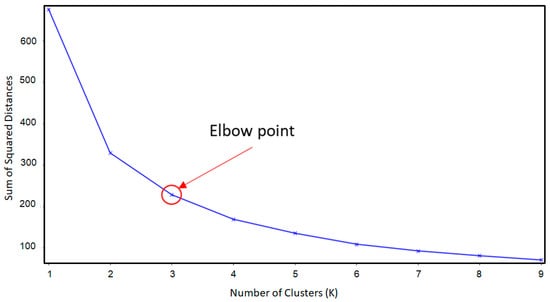 Figure 3. Identification of the optimal number of clusters using the elbow method.
Figure 3. Identification of the optimal number of clusters using the elbow method. - The third step is to implement the K-means technique to find and identify the clusters/zone of the provided data. Figure 4 shows a distribution of the three generated clusters with respect to PCA 1 and PCA 2. The first cluster covers 87 trials/points, while 70 points have been included in cluster 2. Cluster 3 includes 88 points. In addition, Table 2 shows the ranges for the three measured responses for each cluster. It can be observed that clusters 2 and 3 shared the same range for the unit volume machining time, while the highest range is noticed within cluster 1. This means the decision maker can rely more on cluster 2 or 3 if higher productivity is the primary objective function. In terms of surface roughness, both clusters 1 and 2 have almost the same range compared to cluster 3, which offered higher surface roughness (i.e., an increase by ~49% for the lower bound and ~35% for the upper bound). This means that either cluster 1 or 2 can represent the desired choice where the surface quality of the machined product is the primary objective function. It is evident that cluster 2 offers the lowest range in terms of specific energy, followed by cluster 3 and cluster 1. It should be stated that the generated clusters offer clear insights to the decision makers, however, there is still a need to offer optimal solution(s) within each cluster based on different scenarios. This is to accommodate all desired objectives (sustainability goals) the decision maker plans to accomplish.
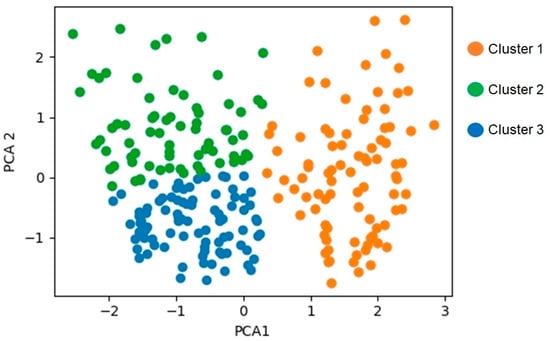 Figure 4. The three generated clusters using the K-means based on the two normalized principal components.
Figure 4. The three generated clusters using the K-means based on the two normalized principal components. Table 2. The ranges of responses for each generated cluster.
Table 2. The ranges of responses for each generated cluster.
To accommodate all desired objectives (sustainability goals) the decision maker plans to accomplish, different scenarios should be clearly identified. These scenarios are mainly different based on the importance weight assigned to each studied response. In the developed approach, it is recommended to employ the entropy method to find the optimized weights. The entropy method has been implemented on the three generated clusters, and the results (assigned weights) are obtained as shown in Table 3, based on the procedure presented above (fifth step). In addition to the weights obtained through the entropy method, three other scenarios (roughing, finishing, balanced) are added so that the decision maker can still be more flexible to select the desired objectives and/or switch from a certain scenario to another different scenario with minimum effort. The weights assigned to each studied response under the roughing, finishing, and balanced scenarios are presented in Table 4. In the roughing scenario, higher weight is provided to unit volume machining time, and lower weight is assigned to surface roughness. On the other hand, in the finishing scenario, higher weight is provided to unit surface roughness, and lower weight is assigned to unit volume machining time. Meanwhile, equal weights are assigned to the three outputs when there is a balanced scenario.

Table 3.
The assigned weights for the studied responses within each cluster using the entropy method.

Table 4.
The assigned weights for the studied responses under the roughing, finishing, and balanced scenarios.
- The last step is to apply the GRA technique to find the optimal solution within each generated cluster for the four defined scenarios (i.e., entropy, finishing, roughing, and balanced). Table 5, Table 6 and Table 7 showed the optimal solutions for clusters 1–3, respectively. The optimal solutions for cluster 1 showed that both roughing and balanced-based scenarios can be achieved using the same process parameters. In addition, under all studied scenarios, the optimal level for the rake angle and nose radius was the same (i.e., nose radius of 0.8 mm along with a rake angle of 10°). Also, the optimal cutting velocity was 200 m/min for all scenarios, except the entropy scenario where it was 150 m/min. It should be stated that the results obtained in Table 5 were compatible with the physical meaning of each scenario. For example, the lowest surface roughness was obtained under the finishing scenario, while the lowest unit volume machining time was attained under the roughing scenario. In terms of the optimal solution for cluster 2, it is clear that the optimal level for the rake angle, nose radius, and cooling type was the same (i.e., nose radius of 0.8 mm, rake angle of 10o using MoS2). In addition, the results obtained in Table 5 were compatible with the physical meaning of each scenario. For example, the optimal level of feed rate under the finishing scenario was lower than the optimal feed rate used in the roughing scenario. Such information helps the decision maker to properly select the optimal process parameter settings based on the desired preference. Concerning the optimal solutions of the last cluster (see Table 7), it is clear that using graphite solid lubrication is dominant under all studied scenarios, except the finishing scenario where wet machining is the optimal cooling type. It is also noticeable that the optimal feed rate under all studied scenarios is the same (i.e., 400 mm/min). In addition, the optimal cutting velocity was the same under all scenarios, except the finishing scenario where the optimal cutting velocity was higher (i.e., 250 m/min). This is physically compatible with the finishing scenario, where higher velocity is required to achieve better surface quality. Generally, the obtained results in Table 5, Table 6 and Table 7 present all optimal solutions under the three generated clusters for the four studied scenarios. These different optimal solutions under different conditions provide the decision maker with the needed flexibility to select the optimal settings, and they make it simple for the decision maker to find the appropriate settings in the event that a new scenario is unexpectedly required. Because of this, such an approach is considered to be crucial in achieving a sustainable machining system.
 Table 5. The optimal solutions for all scenarios of cluster 1.
Table 5. The optimal solutions for all scenarios of cluster 1. Table 6. The optimal solutions for all scenarios of cluster 2.
Table 6. The optimal solutions for all scenarios of cluster 2. Table 7. The optimal solutions for all scenarios of cluster 3.
Table 7. The optimal solutions for all scenarios of cluster 3.
To visualize the obtained results after implementing the developed approach, Figure 5 is generated. Figure 5 shows a comparison of the optimal responses of the different machining scenarios (i.e., roughing, finishing, balanced, entropy) for the three determined clusters. Cluster 1 provides better performance in terms of surface roughness (i.e., a minimum improvement of ~18% and ~67% compared to cluster 2 and cluster 3, respectively). Significantly, such improvement in surface quality can be observed in the finishing and entropy-based scenarios. It should be also stated that lower specific energy values have been observed within cluster 2 for all studied scenarios (i.e., a minimum improvement of ~32% and ~19% compared to cluster 1 and cluster 3, respectively). In terms of unit volume machining time, clusters 2 and 3 offered better performance compared to cluster 1, and the results were comparable for clusters 2 and 3 within all scenarios except the finishing scenario, where cluster 3 offered lower unit volume machine time by almost 25.1%. This reveals the importance of the data clustering, where every cluster may present superiority in one or more obtained responses. Furthermore, such analysis can provide the decision maker with enough flexibility to select the optimal cutting settings under different scenarios, and it also provides the freedom to switch between different clusters and/or scenarios with extremely minimal efforts.
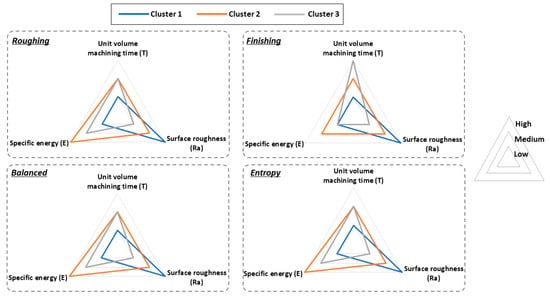
Figure 5.
A Comparison between the optimal results of the different machining scenarios for the determined clusters.
4. Conclusions and Future Directions
The current study offers a new decision-making approach to sustainable machining processes using data clustering and multi-objective optimization methods. This approach can support the decision maker in selecting accurate and optimal ranges of cutting process parameters under different scenarios (i.e., roughing, finishing, balanced, and entropy). The developed approach has been validated through a case study, where three clusters were generated and optimal solutions identified using grey relational analysis for four studied scenarios. This means that a total of 12 different optimal solutions were offered after implementing the developed approach. It was found that cluster 1 provides better performance in terms of surface roughness (i.e., a minimum improvement of ~18% and ~67% compared to cluster 2 and cluster 3, respectively). Lower specific energy values were observed within cluster 2 for all studied scenarios (i.e., a minimum improvement of ~32% and ~19% compared to cluster 1 and cluster 3, respectively). Concerning the unit volume machining time, clusters 2 and 3 offered better performance compared to cluster 1, and the results were comparable for clusters 2 and 3 within all scenarios, except the finishing scenario where cluster 3 offered a lower unit volume machine time by almost 25.1%. To sum up, the developed approach provides the decision maker with enough flexibility to select the optimal cutting settings under different scenarios, and it also provides the freedom to switch between different clusters and/or scenarios with extremely minimal efforts. This work can be extended in the future by covering more sustainable indicators (e.g., waste management indicators, machining costs), and it can be incorporated into the machine tool to adjust the cutting conditions online, based on the decision maker’s preference.
Author Contributions
Conceptualization, H.H.; Methodology, H.H.; Software, A.S. and H.A.T.; Validation, H.H.; Formal analysis, H.H. and A.S.; Investigation, H.A.T.; Resources, H.A.T.; Writing—original draft, H.H.; Writing—review & editing, A.S. and H.A.T.; Visualization, A.S. All authors have read and agreed to the published version of the manuscript.
Funding
This research received no external funding.
Conflicts of Interest
The authors declare no conflict of interest.
References
- Jayal, A.D.; Badurdeen, F.; Dillon, O., Jr.; Jawahir, I. Sustainable manufacturing: Modeling and optimization challenges at the product, process and system levels. CIRP J. Manuf. Sci. Technol. 2010, 2, 144–152. [Google Scholar] [CrossRef]
- Krolczyk, G.M.; Maruda, R.W.; Krolczyk, J.B.; Wojciechowski, S.; Mia, M.; Nieslony, P.; Budzik, G. Ecological trends in machining as a key factor in sustainable production—A review. J. Clean. Prod. 2019, 218, 601–615. [Google Scholar] [CrossRef]
- Lu, T. A Metrics-Based Sustainability Assessment of Cryogenic Machining Using Modeling and Optimization of Process Performance. Ph.D. Thesis, University of Kentucky, Lexington, KY, USA, 2014. [Google Scholar]
- Hegab, H.; Darras, B.; Kishawy, H. Towards sustainability assessment of machining processes. J. Clean. Prod. 2018, 170, 694–703. [Google Scholar] [CrossRef]
- Mia, M.; Gupta, M.K.; Lozano, J.A.; Carou, D.; Pimenov, D.Y.; Królczyk, G.; Khan, A.M.; Dhar, N.R. Multi-objective optimization and life cycle assessment of eco-friendly cryogenic N2 assisted turning of Ti-6Al-4V. J. Clean. Prod. 2018, 210, 121–133. [Google Scholar] [CrossRef]
- Salem, A.; Hopkins, C.; Imad, M.; Hegab, H.; Darras, B.; Kishawy, H. Environmental Analysis of Sustainable and Traditional Cooling and Lubrication Strategies during Machining Processes. Sustainability 2020, 12, 8462. [Google Scholar] [CrossRef]
- Ameta, K.L.; Solanki, V.S.; Singh, V.; Devi, A.P.; Chundawat, R.; Haque, S. Critical appraisal and systematic review of 3D & 4D printing in sustainable and environment-friendly smart manufacturing technologies. Sustain. Mater. Technol. 2022, 34, e00481. [Google Scholar]
- Fernández-Abia, A.I.; Barreiro, J.; de Lacalle, L.N.L.; Martínez-Pellitero, S. Behavior of austenitic stainless steels at high speed turning using specific force coefficients. Int. J. Adv. Manuf. Technol. 2012, 62, 505–515. [Google Scholar] [CrossRef]
- Hegab, H.; Salem, A.; Rahnamayan, S.; Kishawy, H. Analysis, modeling, and multi-objective optimization of machining Inconel 718 with nano-additives based minimum quantity coolant. Appl. Soft Comput. 2021, 108, 107416. [Google Scholar] [CrossRef]
- Salem, A.; Hegab, H.; Kishawy, H.A.; Rahnamayan, S. Multi-objective optimization during sustainable machining of difficult-to-cut materials. In Proceedings of the Joint Canadian Society for Mechanical Engineering and CFD Society of Canada International Congress, London, UK, 2–5 June 2019. [Google Scholar]
- Zarei, M.; Rezai, A.; Hamidpour, S.S.F. Breast cancer segmentation based on modified Gaussian mean shift algorithm for infrared thermal images. Comput. Methods Biomech. Biomed. Eng. Imaging Vis. 2021, 9, 574–580. [Google Scholar] [CrossRef]
- Salem, A.; Hegab, H.; Kishawy, H.A. An integrated approach for sustainable machining processes: Assessment, performance analysis, and optimization. Sustain. Prod. Consum. 2020, 25, 450–470. [Google Scholar] [CrossRef]
- Hegab, H.; Damir, A.; Attia, H. Sustainable machining of Ti-6Al-4V using cryogenic cooling: An optimized approach. Procedia CIRP 2021, 101, 346–349. [Google Scholar] [CrossRef]
- Zhang, X.; Yu, T.; Xu, P.; Zhao, J. An intelligent sustainability evaluation system of micro milling. Robot. Comput. Manuf. 2021, 73, 102239. [Google Scholar] [CrossRef]
- Moganapriya, C.; Rajasekar, R.; Santhosh, R.; Saran, S.; Gobinath, V.K.; Kumar, P.S. Sustainable Hard Machining of AISI 304 Stainless Steel Through TiAlN, AlTiN, and TiAlSiN Coating and Multi-Criteria Decision Making Using Grey Fuzzy Coupled Taguchi Method. J. Mater. Eng. Perform. 2022, 31, 7302–7314. [Google Scholar] [CrossRef]
- Salem, A.; Hegab, H.; Rahnamayan, S.; Kishawy, H.A. Multi-objective optimization and innovization-based knowledge discovery of sustainable machining process. J. Manuf. Syst. 2022, 64, 636–647. [Google Scholar] [CrossRef]
- Rodić, D.; Sekulić, M.; Gostimirović, M.; Pucovsky, V.; Kramar, D. Fuzzy logic and sub-clustering approaches to predict main cutting force in high-pressure jet assisted turning. J. Intell. Manuf. 2020, 32, 21–36. [Google Scholar] [CrossRef]
- James, G.; Witten, D.; Hastie, T.; Tibshirani, R. An Introduction to Statistical Learning; Springer: Berlin/Heidelberg, Germany, 2013; Volume 112. [Google Scholar]
- Lee, L.C.; Jemain, A.A. On overview of PCA application strategy in processing high dimensionality forensic data. Microchem. J. 2021, 169, 106608. [Google Scholar] [CrossRef]
- Anaraki, S.A.M.; Haeri, A.; Moslehi, F. A hybrid reciprocal model of PCA and K-means with an innovative approach of considering sub-datasets for the improvement of K-means initialization and step-by-step labeling to create clusters with high interpretability. Pattern Anal. Appl. 2021, 24, 1387–1402. [Google Scholar] [CrossRef]
- Halko, N.; Martinsson, P.G.; Tropp, J.A. Finding Structure with Randomness: Probabilistic Algorithms for Constructing Approximate Matrix Decompositions. SIAM Rev. 2011, 53, 217–288. [Google Scholar] [CrossRef]
- Liu, F.; Deng, Y. Determine the Number of Unknown Targets in Open World Based on Elbow Method. IEEE Trans. Fuzzy Syst. 2020, 29, 986–995. [Google Scholar] [CrossRef]
- Yuan, C.; Yang, H. Research on K-Value Selection Method of K-Means Clustering Algorithm. J. Multidiscip. Sci. J. 2019, 2, 226–235. [Google Scholar] [CrossRef]
- Zou, Z.-H.; Yun, Y.; Sun, J.-N. Entropy method for determination of weight of evaluating indicators in fuzzy synthetic evaluation for water quality assessment. J. Environ. Sci. 2006, 18, 1020–1023. [Google Scholar] [CrossRef] [PubMed]
- Tzeng, C.-J.; Lin, Y.-H.; Yang, Y.-K.; Jeng, M.-C. Optimization of turning operations with multiple performance characteristics using the Taguchi method and Grey relational analysis. J. Mater. Process. Technol. 2009, 209, 2753–2759. [Google Scholar] [CrossRef]
- Kuram, E.; Ozcelik, B. Multi-objective optimization using Taguchi based grey relational analysis for micro-milling of Al 7075 material with ball nose end mill. Measurement 2013, 46, 1849–1864. [Google Scholar] [CrossRef]
- Reddy, N.S.K.; Rao, P.V. Experimental investigation to study the effect of solid lubricants on cutting forces and surface quality in end milling. Int. J. Mach. Tools Manuf. 2006, 46, 189–198. [Google Scholar] [CrossRef]
Publisher’s Note: MDPI stays neutral with regard to jurisdictional claims in published maps and institutional affiliations. |
© 2022 by the authors. Licensee MDPI, Basel, Switzerland. This article is an open access article distributed under the terms and conditions of the Creative Commons Attribution (CC BY) license (https://creativecommons.org/licenses/by/4.0/).